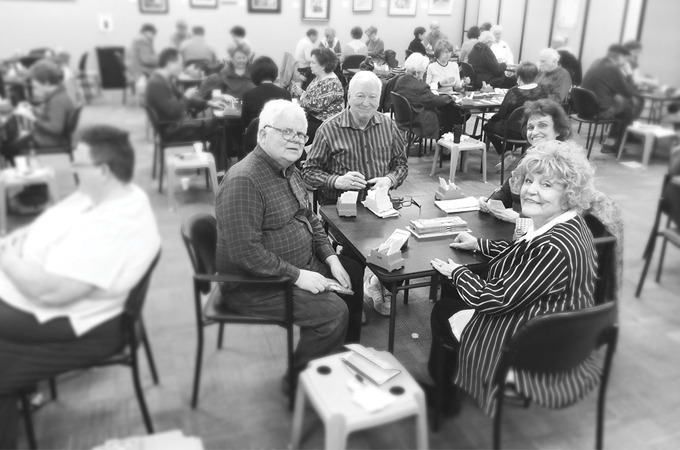The tables are filled and conversation is kept to a minimum while games are being played. Some people are just playing for fun, and some are playing to earn points toward the life master designation. This is a typical day at the St. Louis Bridge Center, opened in October of 2012 to provide local bridge enthusiasts (or those just starting out) a place to congregate and share their skills.
Board president Ann Lemp credits the center for her renewed passion for bridge, as well as for bringing players back to the game and putting St. Louis on the map. “This place has exploded my love of bridge and appreciation for it as a whole, as well as giving many St. Louisans a desire to learn and play,” Lemp says. “In our second full year of being open, the American Contract Bridge League (AC BL) ranked us No. 9 on its list of the nation’s Top 50 Clubs for tables played.”
The idea for a local gathering space was the brainchild of founders Bill Canfield and Keith Graves, who both enjoyed the game so much, they wanted a place where more people could play. Before, it was more an underground operation, with players meeting in dark basements of lodges and community centers. “It’s a bright, open atmosphere here, and everyone is friendly,” Lemp says. “It’s really become a community.” There are bridge clubs all over, she notes, and the St. Louis Bridge Center, located at 8616 Olive Blvd., has nudged its way into the top echelon. She says Canfield and Graves spent almost two years finding a central location and researching what makes a center successful.
The center is open for games Monday through Saturday, as well as some Sundays. Lemp explains that everyone plays the same hand and is scored against each other. “That’s where the competition is,” she says. “At the end of the game, you can see everyone else’s hands and learn what you did right or wrong.” It also offers formal training programs for players of any level and hosts various tournaments. An attractive feature is that anyone is welcome, Lemp says. Members receive a discount on the price of each game, but membership is not necessary. “Anyone can show up and if they don’t have a partner, we’ll find them one,” Lemp says.
Local bridge player and teacher Kenneth Bland, our T&S bridge columnist, agrees that having an actual venue has brought people back to the game and enhanced the experience for newer players. “When it opened, attendance increased, and I got more students who wanted to learn,” he says. “It’s a win-win.” Bland has been playing bridge competitively for nearly 50 years. “When I was in high school, my mom had a bridge group that would play four or five times a week,” he recalls. “When they played at our house, I’d sit and watch. In college, I found myself playing all the time at the student union, drinking beer and eating pizza!”
After a break from the game to raise a family and focus on his career, Bland got out his cards once again in the mid-’90s. His knowledge of the game now can be passed on to others wanting to learn. “There are several different ways to teach: group lessons, seminars and one-on-one,” he says. “I follow a lesson plan. After a lesson, my students and I will play a game and then have a discussion.” Players must be members of the governing AC BL to win points toward the life master designation, but they do not have to be members of the bridge center to win points at games played there. Bland says the center has done a great job of getting new players acclimated to playing in tournaments in order to graduate them to bigger games.
Both Lemp and Bland tout the numerous advantages of the game and having a place to play it locally. “It keeps your brain active, and the bridge center has been important for a lot of new retirees looking for something to do,” Bland says. “We also have a lot of young people who are gifted as well, and we want to develop their skills. There’s a lot more to bridge than poker, you just have to give it a try!”








